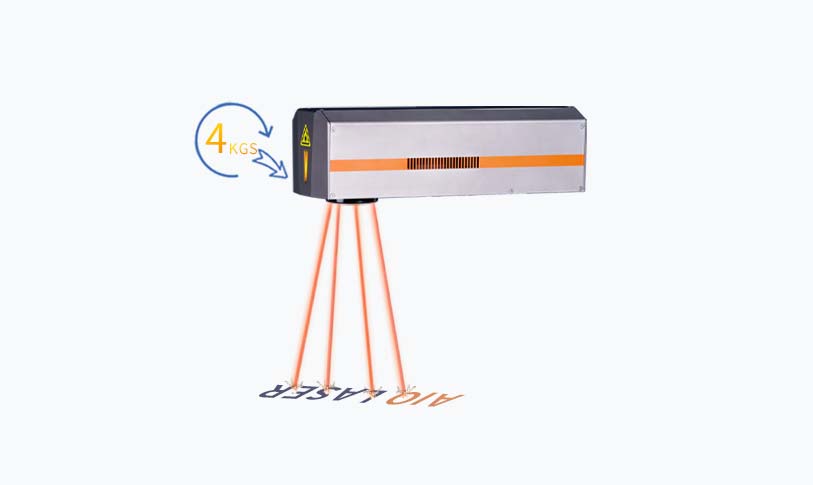[laser pulser]Exploring the Innovative Applications and Future Potential of Laser Pulsers in Technology and Medicine
Laser pulsers, the cutting-edge devices that emit concentrated bursts of laser light, are revolutionizing various fields, including medical technology, manufacturing, and scientific research. These devices utilize high-intensity light pulses to perform an array of functions, from precise surgical procedures to powering advanced imaging techniques. As we delve into the future potential and current applications of laser pulsers, it becomes clear that their role in modern technology is becoming increasingly paramount.

Exploring the Innovative Applications and Future Potential of Laser Pulsers in Technology and Medicine
**Understanding Laser Pulsers**
At their core, laser pulsers are designed to create short bursts of laser energy, which can be finely tuned in terms of duration, intensity, and wavelength. This capability allows them to target specific tissues during medical procedures without causing collateral damage, making them a preferred tool in a variety of surgical applications. The fundamental technology behind laser pulsers typically involves solid-state lasers, fiber lasers, or gas lasers, each chosen based on the degree of precision needed and the material being targeted.

Exploring the Innovative Applications and Future Potential of Laser Pulsers in Technology and Medicine
**Medical Applications**
One of the most impactful applications of laser pulsers is in the field of medicine. Various surgical specialties, including ophthalmology, dermatology, and oncology, have embraced the technology for its precision and safety. For instance, in ophthalmology, laser pulsers are used in procedures such as LASIK surgery to reshape the cornea with incredible accuracy. The laser’s high precision minimizes damage to surrounding tissues, leading to faster recovery times and improved patient outcomes.
In dermatology, laser pulsers can treat a range of conditions, from acne scars to tattoo removal. The short, intense pulses of laser energy target pigmentation and promote collagen regeneration without harming the surrounding skin. This non-invasive approach is an attractive alternative to traditional methods, which may involve longer recovery times and greater discomfort.
Furthermore, in oncology, laser pulsers assist in tumor ablation, allowing for the targeted destruction of cancerous cells while preserving surrounding healthy tissue. The versatility and effectiveness of laser technology in treating various medical conditions highlight the potential for ongoing innovations and improvements.
**Industrial and Manufacturing Applications**
Beyond medicine, laser pulsers are making significant inroads into industrial applications. In manufacturing, laser pulsers are used for cutting, welding, engraving, and marking materials with unparalleled precision. Their ability to focus laser energy allows for intricate designs and clean cuts on materials ranging from metals to plastics. This has led to improved efficiencies in production processes, reducing waste and increasing output quality.
Additionally, laser pulsers are essential in microfabrication technologies, which are crucial in creating components for electronics such as semiconductors and microchips. Precision is vital in these industries, and the use of laser pulsing techniques for etching and structuring materials has simplified the fabrication processes, allowing for miniaturization and the development of high-performance devices.
**Scientific Research and Development**
In scientific research, laser pulsers have become invaluable tools in advancing our understanding of physical and chemical processes. These devices are utilized in spectroscopy, providing insights into molecular structures by measuring how materials absorb and emit light. Moreover, in fields such as astronomy and materials science, laser pulsing technology allows researchers to investigate various phenomena, including laser-induced breakdown spectroscopy (LIBS), which analyzes material compositions from a distance.
The dynamism of laser pulsing extends to burgeoning research in quantum computing and photonics. Scientists are exploring the potential of laser pulsing for manipulating qubits and enabling faster quantum computations, thus bridging the gap between classical and quantum processing power.
**Future Potential and Challenges**
As we look toward the future, the potential applications for laser pulsers are vast and varied. With advances in nanotechnology and materials science, researchers aim to develop laser systems that are even more efficient, versatile, and compact. Innovations in pulse duration and energy control could lead to new medical procedures that are less invasive and more effective.
However, challenges remain, including the cost of high-end laser systems and the need for training professionals to operate them effectively. As technology evolves, establishing safety standards and regulations is vital to ensure the responsible use of laser technology across all sectors.

Exploring the Innovative Applications and Future Potential of Laser Pulsers in Technology and Medicine
In conclusion, laser pulsers are proving to be a transformative technology across multiple disciplines. From enhancing surgical precision in healthcare to revolutionizing manufacturing processes and enabling groundbreaking research, their impact will likely expand in scope and sophistication. As we embrace this evolution, the promise of laser pulsing technology continues to shine brightly on the horizon.co2 80w laser
